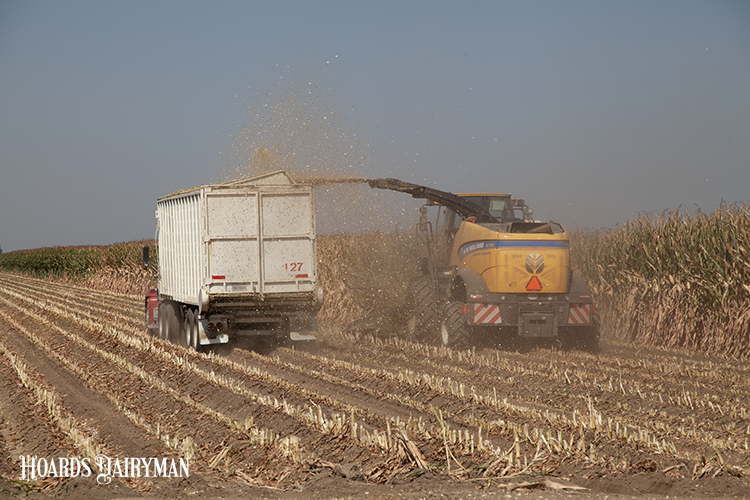
Corn silage harvest is often a waiting game, as farmers carefully watch whole plant moisture in an effort to chop corn at the ideal dry matter level. The general goal is to ensile feed that is at 65% to 70% moisture content.
Unfortunately, the proper dry matter target is not always met. Droughty conditions, plant disease, and delayed harvest can all lead to corn silage that is drier than ideal. Michigan State University’s Barry Bradford talked about why this is a problem and what can be done to work around this situation in a recent MSU Extension Virtual Coffee Break podcast.
“The biggest problem I can think of, beyond reduced yield, is that dry corn silage is inherently difficult to pack,” Bradford stated. “We have to figure out how we are going to get oxygen out of the pile or bag so we can form an anaerobic environment and get fermentation. If we don’t get rid of oxygen, we are not going to have the kind of microbial growth we want.”
Bradford recommended doing whatever is possible to pack the silage better. This includes reducing length of cut when chopping and adding another pack tractor. This extra effort is worth doing, he noted, to get more oxygen out of dry silage.
In addition, “Make sure kernel processing is turned up to the max,” he advised. Since the kernels in dry corn are harder to ferment, they are less digestible if particle size is not reduced.
At normal moisture content, the pH of the feed starts to drop within a few days after ensiling, and fermentation continues for a couple of months. Bradford explained that in really dry corn silage, the lack of moisture makes it harder for microbes to act on the nutrients, and the pH doesn’t drop nearly as quickly, so fermentation is a much slower, drawn-out process. The silage pH may not plateau for five to six months in this case, but Bradford acknowledged that most farms would not be able to wait that long prior to feeding the new crop of silage.
Another challenge with dry silage is bunker face management. Face stability is maintained in part by acetic acid, which is produced during fermentation. The lack of fermentation in dry silage can cause the face to lose stability quicker. Bradford said farms can purchase organic acids to spray on the face of the bunker to help maintain quality. Other suggestions are feeding this silage in cold months, when face management is easier, or feeding the silage quickly to use it up.
When feeding dry silage, Bradford noted that starch digestibility is not going to be as good as anticipated, since we rely on fermentation to denature proteins in corn grain that makes starch readily available for the bacteria to degrade. On the flip side, fiber is usually more digestible in drought stressed silage, which can lead to diet formulation challenges.
Since this silage won’t be very energy dense, farms may attempt to backfill with more concentrate, but because the fiber is more digestible, the cows may end up deficient in effective fiber. One option may be adding nonforage by-products, such as beet pulp, that don’t add starch but fill a hole in the diet and supplement a shortage of corn silage. Bradford added that some farms may need to include other forages, such as a cover crop silage or wheat straw, to provide some effective fiber to maintain rumen health without taking up too much space in the diet.








